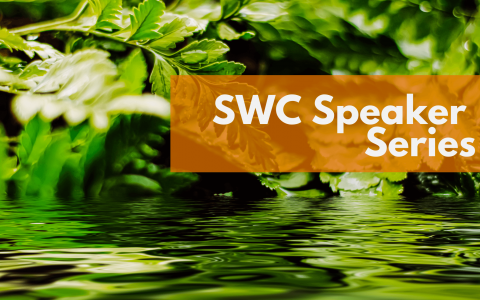
Social connection and resilience to stress
Interview with Professor Michael Platt, University of Pennsylvania
Following a major stress event like the global pandemic, how do our brains cope with the aftermath and do social connections influence our resilience? Recent SWC Seminar Speaker Dr Michael Platt shared his work studying the effects of the social brain on survivorship in a population of monkeys following a hurricane. In this Q&A, he expands on physiological synchrony, how the hurricane impacted his team’s research, and what we could glean from these scientific findings.
How do social connections impact humans and other social animals physiologically?
We know that social connections are important for health, happiness, and wellbeing. These benefits, which include longevity and financial outcomes, underline how strongly we are wired to connect. Social connections are a major component of the human toolkit for navigating the world, and their importance is seen in people who have trouble making connections or are prevented from connecting with others, which can be devastating.
We actually measured the impact of social isolation during the pandemic. In depression or anxiety, or when you feel lonely or have social pain, the areas of the brain that are activated are the same as those when you feel physical pain. And there are longer-term consequences of not having social support, especially in the face of trauma. One of the major ways these consequences manifest is through inflammatory pathways that are triggered by the stress response.
Does physiological synchrony only apply in social animals?
All mammals are to some degree a little social. Mating, for example, is when two solitary animals come together for the purpose of procreation. Synchrony has been observed in all social animals that have been studied so far. Admittedly, that’s not a lot (we wrote a review paper on this last year). Physiological synchrony was first observed in humans. Then, people who did animal work started to report also observing it in mice, bats, monkeys, and birds – so even outside of mammals – selectively during social interactions.
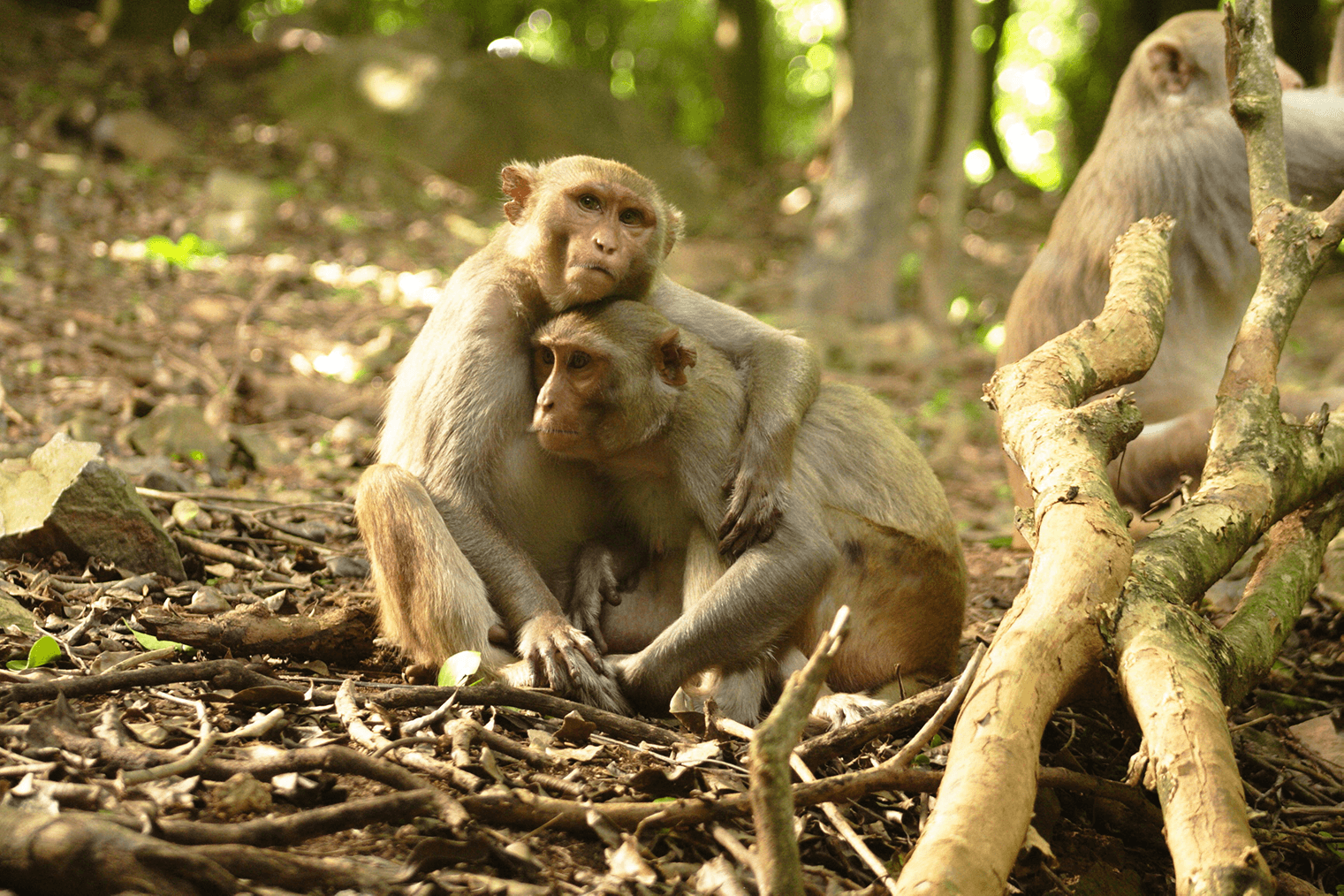
Image credit: Lauren Brent
How did you try to define the biological mechanisms that mediate our ability and desire to connect?
There are two components: the motivation to connect, and the skill to do it. For individuals who are less connected, this could be a result of either of these processes.
If you look at the case of autism, which is characterised by difficulties in social connection, some people on the spectrum have said that they don’t care about connecting while others seem to have an intense desire to connect, but don’t know how. They don’t know how to respond spontaneously and dynamically to incoming social information. I think this is an important distinction.
One of the major discoveries of the last couple decades in neuroscience is that there is a social brain network that is engaged when we interact with and think about other people. We are currently debating whether it is a dedicated network, completely specialised for processing social information, or encapsulated, meaning social information just happens to be the most complicated information it deals with.
We use a variety of different techniques in two different species—rhesus macaques and humans—to look at the anatomy and correlates of neural activity, including the activity of single neurons. We are now also looking at some of the molecular drivers of gene expression and regulation. This is an ambitious project that looks at multiple levels. It starts with the genome you’re born with and how that relates to social behaviour, then looks at how your social environment interacts with that to dynamically change everything from the proteins made in particular cells to how cells encode information. Then it finally moves onto structural differences and anatomical variations associated with the way people or monkeys use that network.
There is the social go-getter, or extrovert, who is charismatic and good at interacting with other people – this is the natural co-operator. And then there are people who have a lot more difficulty. That is the scope we are working with. It requires many kinds of techniques and more expertise than I have, so there is a big team of people who are involved.
Were you surprised to find increased structural connectivity in the middle superior temporal sulcus (mSTS) in monkeys who have more friends?
We were expecting it, as it was our hypothesis, but it didn’t have to be that way. So, it was gratifying to see that it’s true in the real world – in a natural situation.
One thing that was surprising was that laboratory studies have also shown a variation in some parts of the social brain network and some brain stem areas, depending on social status. Social capital, which allows you to get ahead, has two major components: social support, or how many friends you have, and your social status. In humans, social status derives from financial status as well as differences in power. For monkeys, status is inherited in females and achieved through aggression and coalitions in males. Just like for humans, increased status translates into increased resources and ultimately success.
Prior studies in the lab have shown that the size of some parts of the social brain network vary with social rank. But we didn’t find any evidence for that in monkeys who were more in a state of nature. This raises very interesting and difficult-to-answer questions. At a minimum, it reveals that what you see in a lab may not be what’s occurring in the real world.
In a spatially-constrained lab, a subordinate cannot get away from a dominant monkey – or doing so is very difficult. But a monkey on Cayo with high rank can get access to food, and so can a low-ranking monkey! And if a high-ranking monkey threatens the subordinate, it can walk 100m away and be safe.
This shows how status and behaviour operate quite differently in the wild and it’s possibly for that reason we didn’t see any evidence for status-related variation in brain structure in the Cayo monkeys. This was quite striking, given there was prior evidence for it in the laboratory.
How did Hurricane Maria in Cayo Santiago affect your research and the monkeys in the field?
As you can imagine, watching a hurricane bear down on a 10+ year research programme on Cayo was terrifying. Although we were somewhat prepared, we couldn’t anticipate the devastation that was wrought which was at every level. Firstly, the people in our team luckily all survived, but their homes and cars were destroyed. This was a real hardship. Our first objective was therefore to put a pot of money together. One of our collaborators flew down to the site with a duffel bag full of cash, gathered from all the investigators working on Cayo, because the banks were not working. This was an image right out of a movie! We also got together with our universities and other partners to ship containers filled with supplies for the whole town of Punta Santiago, the town closest to Cayo that serves as the staging ground for our studies. That was one thing we did to help with the long-term viability of the research site. Many other folks also helped volunteer time and money to repair Cayo, rebuild the boat dock, etc. Even Kim Kardashian and Will Smith helped raise awareness and funds for the restoration.
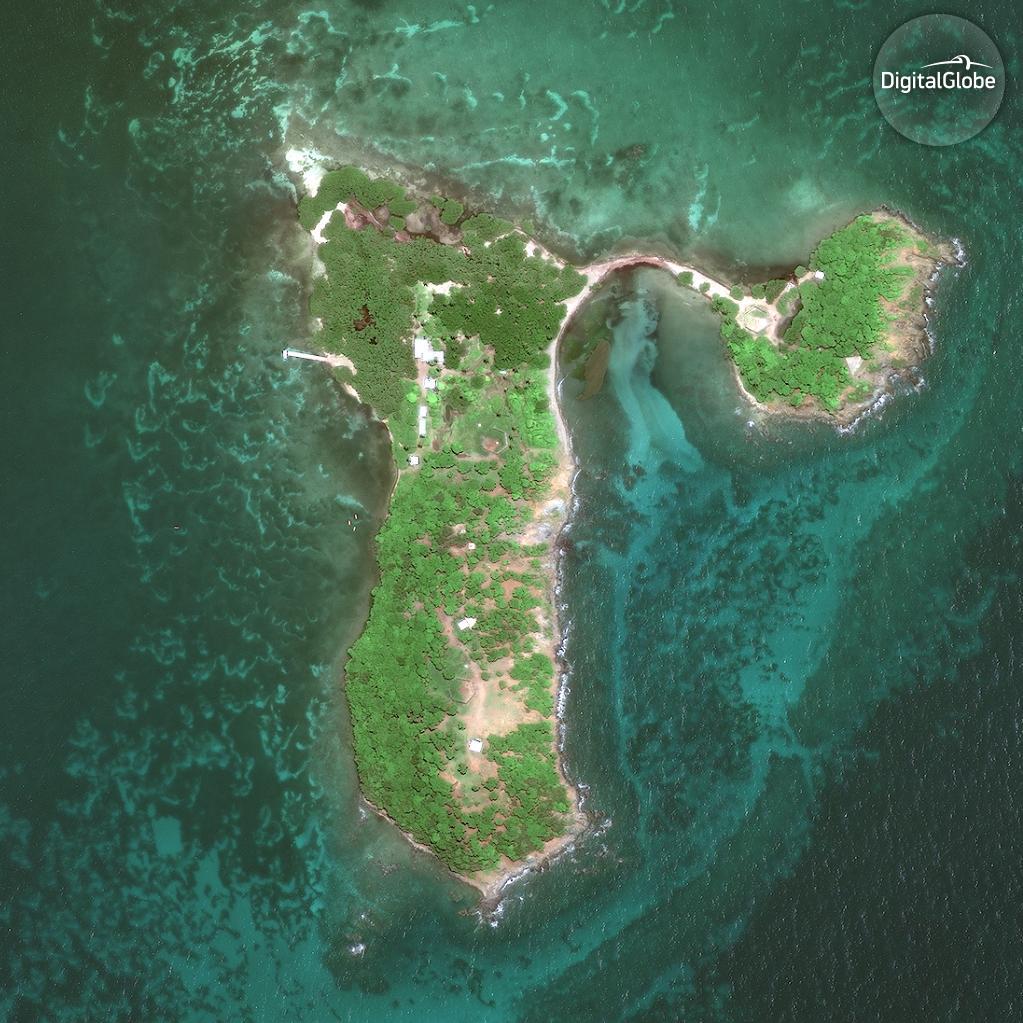
Cayo Santiago before Hurricane Maria. Image credit: Digital Globe
Also, we had to get the island cleared of debris and get the fresh water-collection and food supply systems and back up and running. Some things out there still haven’t been fixed, so we’re still feeling the impacts.
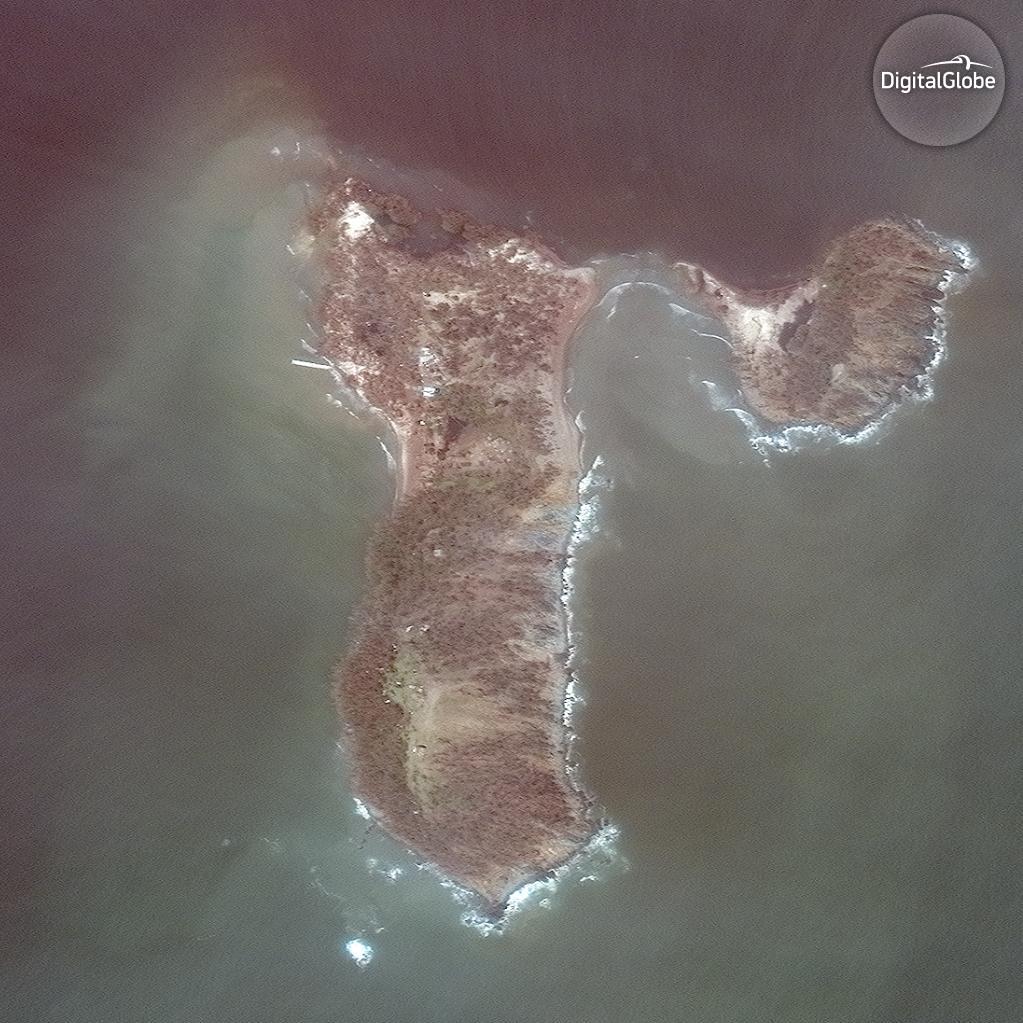
Cayo Santiago after Hurricane Maria. Image credit: Digital Globe
The monkeys all survived – we have no idea how. They’re smarter than us, I guess! But then, we saw a big spike in deaths the month thereafter. And ever since, their behaviours and physiology have changed. They are aging rapidly, from the molecular level up to the functioning of their bones and bodies.
The hurricane itself is an intense, acute stressor, followed by a long-term chronic stress, which I think is a good model for what happens to humans. Be it a hurricane, storm, fire, or war, when you’re put into that long-term stressful situation, the impacts are devastating.
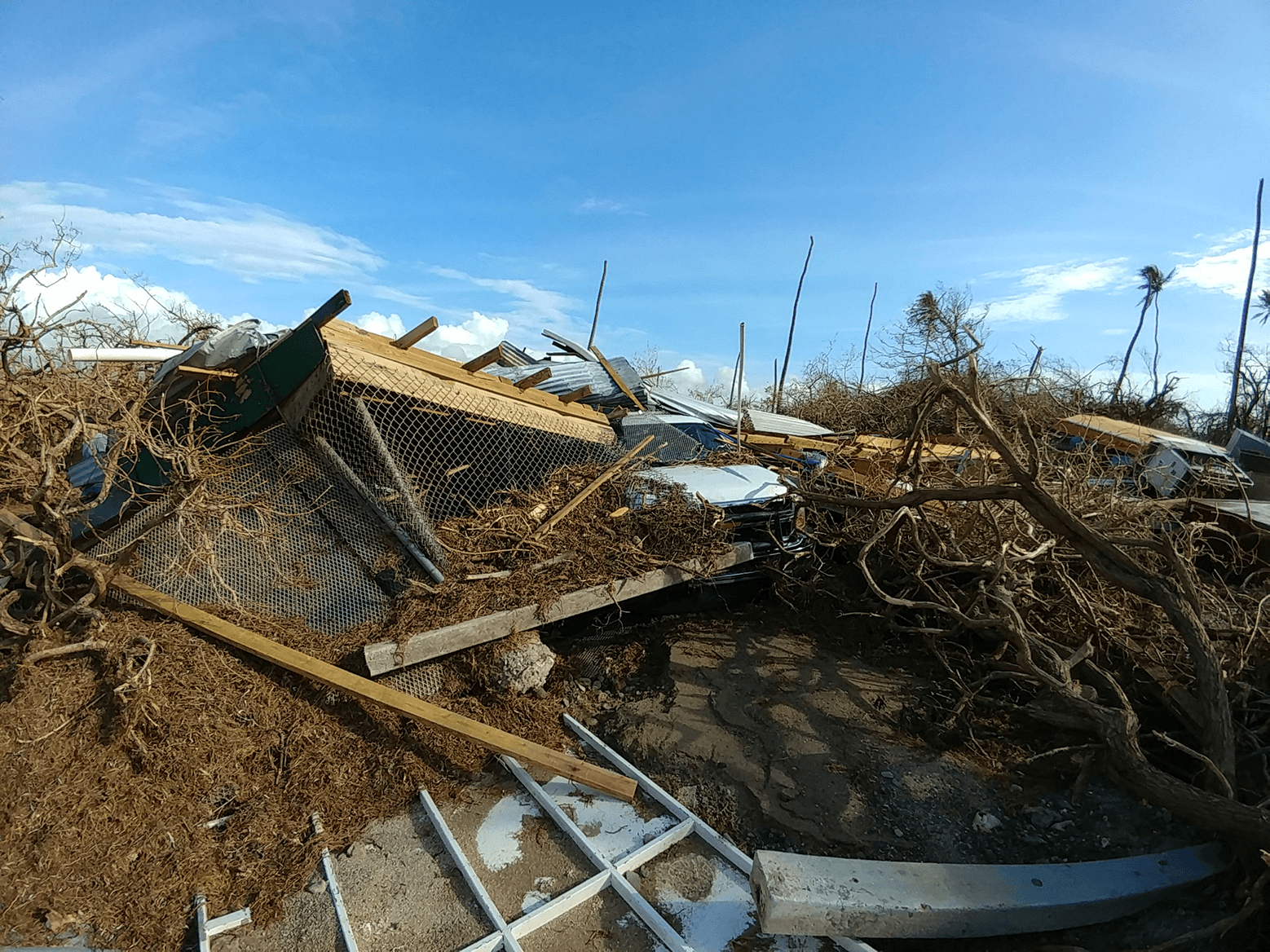
Did you see any difference in survivorship in monkeys that made more social connections?
That is an ongoing analysis. We can look at survivorship now that we are five years out. We have enough numbers for plotting differential mortality as a function of social connections. It is not published yet, but the trends are all there. The monkeys who had more connections before the storm seem to have higher survivorship, and the survivorship of their offspring seems to be higher as well.
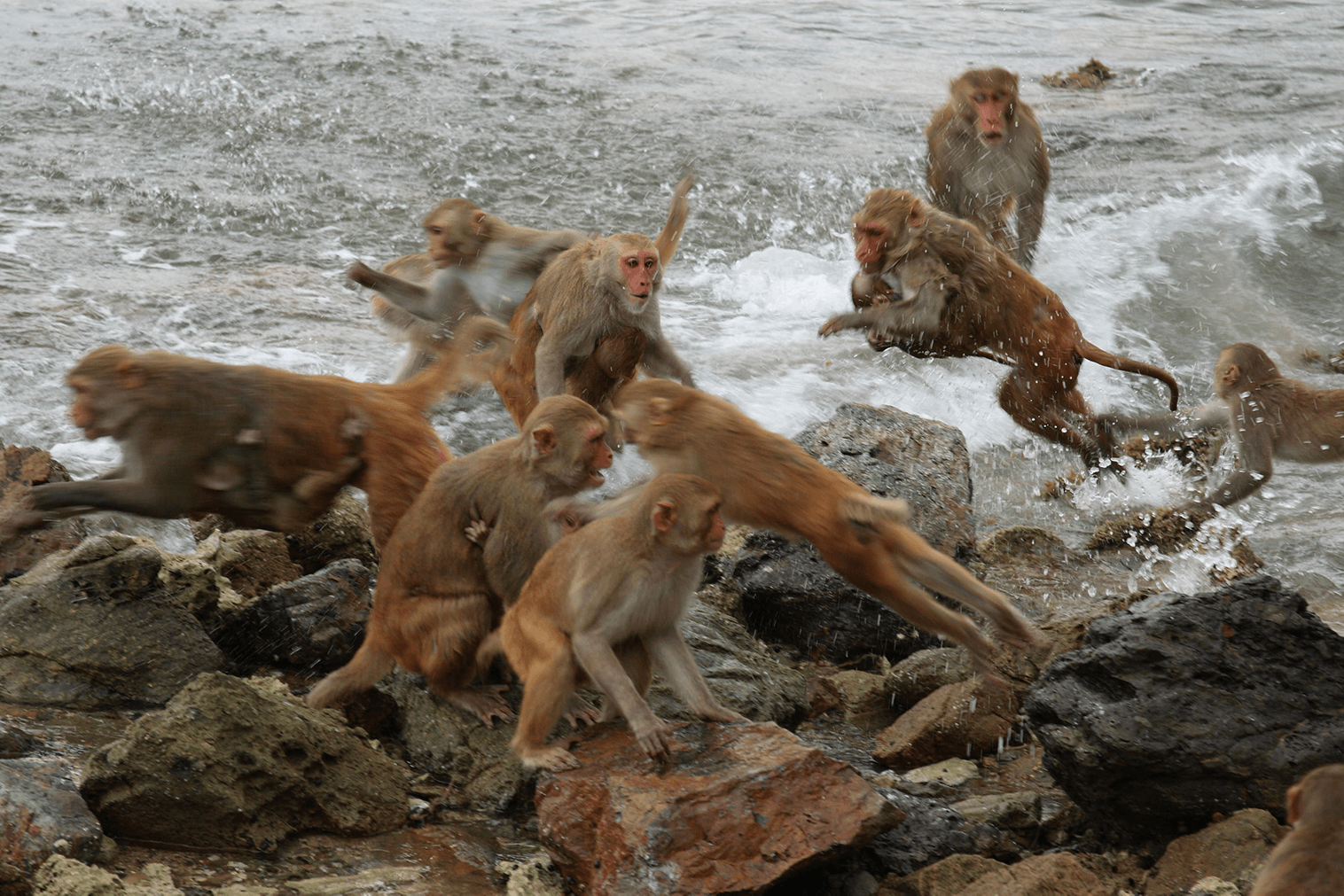
Image credit: Amanda Accamando
What implications does this research have for human resilience and how we can respond to climate change?
We already know from studies of trauma, and from people who have been through war, that social support is critical to resilience. People do better if they have friends or family who can provide support and resources, both emotional and instrumental.
I think the monkeys are teaching us a great lesson here. When things get bad, when it might seem like the only alternative is to turn on each other, we’re wired to do the opposite. And for some reason, maybe the conditions of modern life, we don’t always do that. If you look at people who are not living in industrialised nations, who practice subsistence level lifestyles -- like our ancestors had for hundreds of thousands of years -- they don’t seem to suffer the stresses that we seem to suffer. I don’t know if this means they are more resilient or not, but what I've read in the anthropological literature is that people who practice more traditional ways of life are more cooperative and pro-social and willing to share because their social organisation is more communal. And in that way, the whole community is more resilient.
Unfortunately, there’s a lot of attention paid when a really bad thing happens and everybody helps each other out, but then you go back to what you’ve been doing. And people remain in conditions that can be challenging or stressful for them.
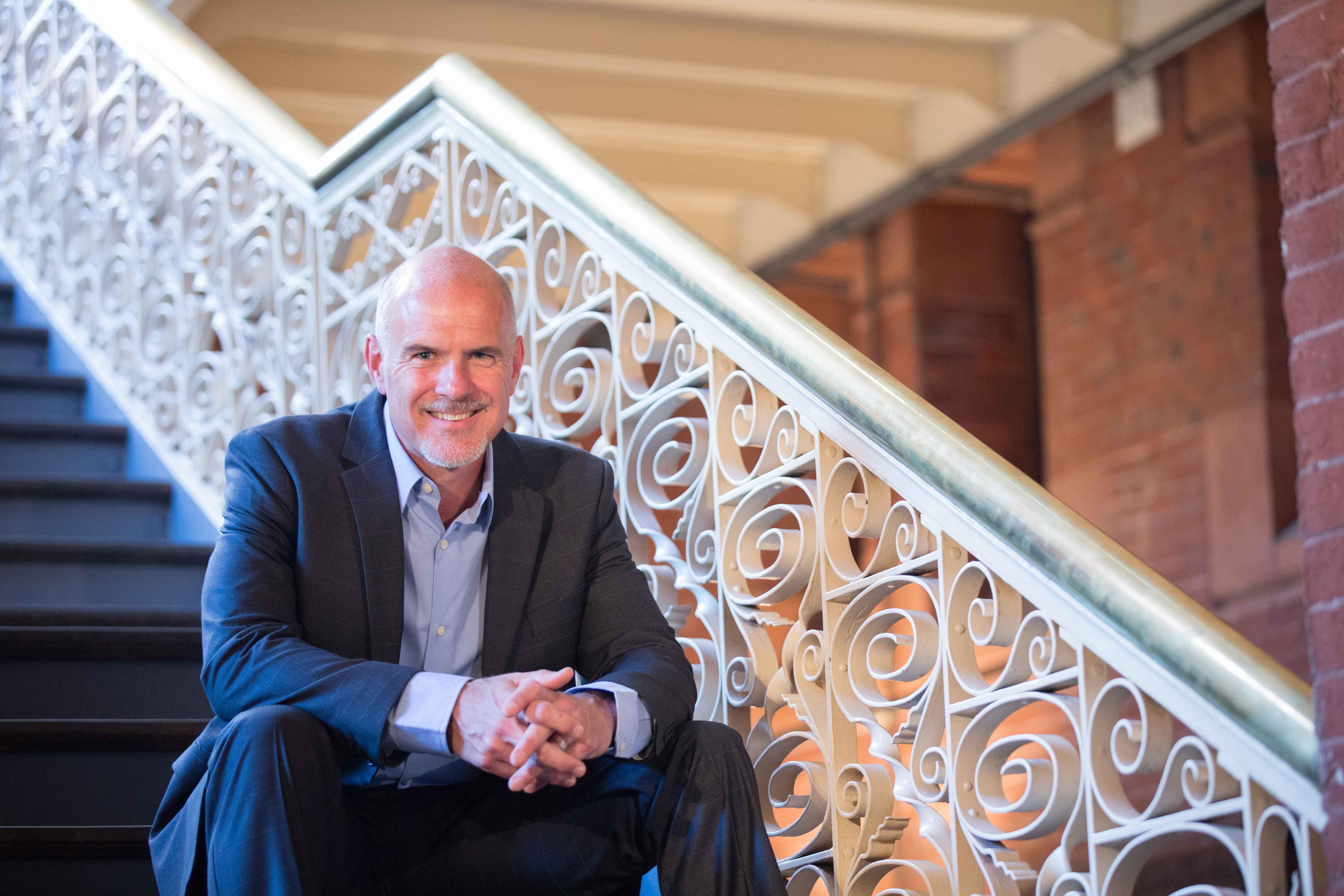
About Professor Michael Platt
Michael Platt is a neuroscientist known for asking some of the most challenging questions in 21st century neuroscience - and conceiving innovative ways to find the answers. Principle questions focus on the biological mechanisms that underlie decision-making in social environments, the grasp of which has broad-scale implications for improving health and welfare in societies worldwide. Broad expertise in psychology, economics, evolutionary biology and ethology, in addition to collaborations with colleagues in these fields, have enabled him to reach ever-deeper levels of understanding about the neural bases of cognitive behaviour. Michael received his B.A. at Yale and his Ph.D. at the University of Pennsylvania, both in anthropology, and did a post-doctoral fellowship in neuroscience at New York University. His work has been supported by the National Institutes of Health, the Klingenstein Foundation, the McDonnell Foundation, the EJLB Foundation, Autism Speaks, the Broad Foundation, the Klarman Foundation, the Simons Foundation, and the Department of Defense, among others. He is winner of a MERIT award from the National Institute of Mental Health, the Williams Faculty Research Prize in the Duke University School of Medicine, and was an Alfred P. Sloan Foundation Fellow. He has given the Sage Lecture at UC Santa Barbara and has received the Astor Visiting Professor award at Oxford University (deferred). Michael has authored over 160 peer-reviewed papers and over 60 review and opinion papers, and his work has been cited over 18,000 times. Michael is an editor of major textbooks in neuroscience and cognitive neuroscience, and he is a former president of the Society for Neuroeconomics. A revered instructor and mentor, Michael won the Master Teacher/Clinician Award from the Duke University School of Medicine. He is the former Director of the Duke Institute for Brain Sciences, former Director of the Center for Cognitive Neuroscience at Duke University, and founding Co-Director of the Duke Center for Neuroeconomic Studies. Michael’s work has been featured in the New York Times, Washington Post, Wall Street Journal, Newsweek, the Guardian, and National Geographic, as well as on ABC’s Good Morning America, NPR, CBC, BBC, and MTV. He has also served as a consultant on several films, including The Fountain (Warner Bros, Darren Aronofsky, director), as a scientific advisor to NOVA, and on the Scientific Advisory Boards of several companies, and is also a co-founder of Cogwear, a neurotechnology startup.
